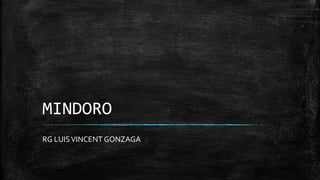The document provides a detailed history of Mindoro and Quezon provinces in the Philippines, highlighting their trade relations, geographical features, cultural diversity, and notable figures. Mindoro, once known as 'Mai' and later as 'Mina de Oro,' has been inhabited by both Tagalogs and the Mangyan tribes, while Quezon, originally divided among several provinces, saw its own evolution with key historical milestones and a strong agricultural economy. The text also reflects on the literary contributions and cultural festivals from both regions.



























![Geography of Quezon
▪ Quezon, east of Metro Manila, is the 8th largest
province in the Philippines having an area of
8,989.39 square kilometres (3,470.82 sq mi).[22] It is
the largest province of Calabarzon, comprising
879,660 hectares or 53.21% of the total land area of
the region.[23] Of this area, 513,618 hectares is
categorized as agricultural land.](https://image.slidesharecdn.com/mindoro-191101173018/85/Literature-in-Mindoro-and-Quezon-28-320.jpg)





![Agro-industry
▪ Quezon is the country's leading producer
of coconut products such as desiccated
coconut, virgin coconut oil, coconut juice, coconut
oil[6] and copra. A large part of the province is
covered in coconut plantations.](https://image.slidesharecdn.com/mindoro-191101173018/85/Literature-in-Mindoro-and-Quezon-34-320.jpg)














